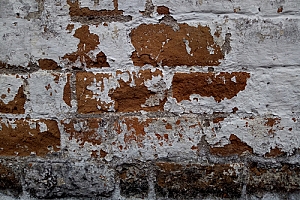An HVAC system is a vital part of any home or business. But it works best with a supporting cast of a well-programmed thermostat and sealed ductwork.

Gone are the days of rattling furnaces; today’s systems are built to reduce noise and provide energy efficiency. Plus, they’re backed by excellent warranties. Contact TAP Heating And Cooling for professional help.
A working, efficient HVAC system is the key to a comfortable home. However, like any system it can run into some problems from time to time. One issue homeowners often deal with is hot and cold spots. Luckily, these temperature inconsistencies aren’t always a sign of HVAC failure and can often be resolved with a few simple steps.
The first thing to check is whether or not the air vents are obstructed by items such as long window treatments, furniture, or bunched up area rugs. This can cause a significant reduction in airflow and lead to temperature inconsistencies. A clogged air filter also prevents a system from delivering optimal airflow and should be regularly replaced to maintain high levels of air quality.
Poor ductwork can also contribute to hot and cold spots. Over time, the seals between ductwork segments can wear out and allow air to leak out. This creates imbalanced temperatures that make it harder for the system to reach all areas of the home evenly.
Other factors can influence how well a home is heated or cooled, including its design and the number of floors. Homes with tall ceilings may have trouble keeping the lower rooms cool because heat rises. Likewise, open floor plans with multiple rooms can be difficult to heat and cool evenly.
A faulty thermostat can also trigger temperature inconsistencies. These can be caused by a variety of issues, including inaccurate sensors that cause the system to work harder than needed or simply sending incorrect signals that the house is hotter or colder than it really is.
If you suspect a faulty thermostat is the culprit, a professional will be able to help diagnose and repair the problem. Alternatively, if the system itself is to blame for uneven temperatures, an expert can recommend the best solution for the situation.
A good place to start is by having a professional measure the airflow and insulation levels in a home and then develop a plan to solve the issue. This can range from extending and modifying a home’s ductwork to installing a new HVAC system with a zoning feature that helps to control temperatures by zone.
Leaky Ducts
Duct leaks rob your home of conditioned air and force HVAC equipment to work harder than it should. In addition, a leaky duct system creates dirt and debris in the airflow and expedites normal wear on your heating and cooling equipment.
A visual inspection of your ducts can help you identify problem areas. Look for rust, loose joints, and damaged or dislodged insulation. If you see any of these, mark the area with a grease pencil or some other easy-to-remember marker.
Most duct leaks occur at joints, where the ducts meet or change direction. When these areas aren’t sealed properly or have shifted over time, air can escape. This is especially common in attics and crawlspaces, where ducts are often located. You can also spot a leaking duct by listening for hissing sounds coming from the vents. Leaking ducts can also be spotted by checking your energy bills. If you notice that your summer and winter energy bills are higher than usual, this is a good sign that you have a leaking duct.
Supply ducts usually leak more than return ducts. This is because the conditioned air being delivered to rooms in your home passes through a series of ducts before reaching the living spaces. Any leaking spots in the ductwork, especially at joints or near vents, will result in some of that air being lost to unconditioned spaces.
The most common cause of leaks in the supply ductwork is improper installation and/or damaged or dislodged insulation. This can cause the metal ducting to be punctured or to develop gaps and tears. It’s also common for loose joints, ill-fitting vent covers and insufficiently tightened screws to cause air leakage.
Return duct leaks are caused by a pressure differential between the air inside the ducts and the surrounding air. The resulting negative pressure can cause the ducts to be sucked into a vacuum or for the conditioned air to be dispersed into unconditioned spaces. This strains your HVAC equipment because it’s not reconditioning conditioned air but rather conditioning unconditioned outdoor air. A visual inspection can help you identify a duct leak, but if you suspect that you have more than the recommended 2% leakage, you’ll need to call in a professional. An experienced HVAC technician can use a duct leakage detector or a flow hood to identify leaking ducts beyond what you can see with a visual inspection.
Mold & Mildew Growth
Mold is a common problem found in homes and businesses. It grows best in damp environments where there is plenty of food for it, such as dust or organic debris. Moisture and humidity are also the primary causes of mold in HVAC systems. If there is mold inside your system, the spores can circulate throughout your home or business, spreading the mold to other parts of the building.
Air ducts are one of the most popular places for mold to grow in an HVAC system. The evaporator coil and drain pan are also commonly affected by mold. The spores can then spread to other areas in your home or business through the air vents. If you notice a musty or earthy smell that persists, particularly around your vents and when your HVAC is running, it’s likely a sign of a mold infestation in your air ducts.
There are four things that mold needs to grow: moisture, a food source, oxygen and a suitable temperature range. When your HVAC is running, it often pumps cold air through the air ducts, which may cause condensation in some areas. This condensation can lead to water accumulating in the evaporator coil and drip pan. If you have a dehumidifier and keep the humidity levels in your home or office low, mold growth is less likely to occur in your air conditioning unit.
Leaks are another common reason for HVAC-related mold problems. Small leaks in ductwork or in the system’s air handler and compressor can create the perfect environment for mold to grow. Leaks are more likely to occur in older ductwork, where the seals have deteriorated over time.
If you suspect a leak in your air conditioner, have it checked by a professional immediately. They can inspect and repair the leak, preventing further damage to your unit and preventing mold from growing in your ducts.
Low Airflow
If you’ve changed your AC settings and put your hand in front of your vents but feel weak airflow, it could be an indication that there’s a problem with the airflow through your HVAC system. Weak airflow makes it hard for your system to keep up with the temperature in the room and impedes on its ability to circulate healthy indoor air.
The first step to finding a solution is to make sure your vents and registers aren’t blocked by furniture or drapes. You should also check your return vents to see if they’re open. If they are closed, you should open them to get the airflow flowing again.
Another common cause of low airflow is clogged or dirty evaporator coils, which are the heating and cooling coils in your system. These can be difficult to clean without the proper tools and techniques. However, if they aren’t cleaned regularly, they can restrict airflow and lead to hot or cold spots in the room.
You may also find that your ductwork is either too small or poorly designed. A professional can help you determine if your ducts are the right size for your home, based on a Manual J load calculation and other factors like square footage, ceiling height, insulation type, climate in your area and other factors.
Your thermostat can be a culprit of poor airflow as well. If it’s not calibrated correctly, or if the batteries are low, it can prevent the fan from running when needed. This can also cause the system to short cycle, causing it to overwork and wear out faster.
When a professional examines your airflow, they’ll be able to determine what’s going on and recommend the best solution. For example, if your air conditioner is too large for the size of your house and it’s continually overworking, they can help you install new ductwork and improve airflow to create a more comfortable environment. They can also fix issues with leaking ducts and other underlying problems. For the best results, you should have a professional tune-up done each year to ensure your HVAC system is working properly.




